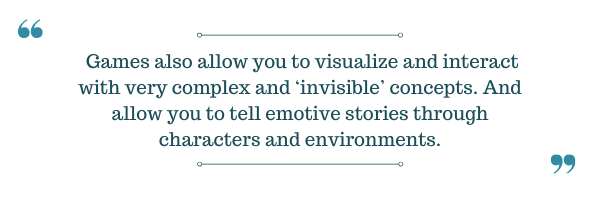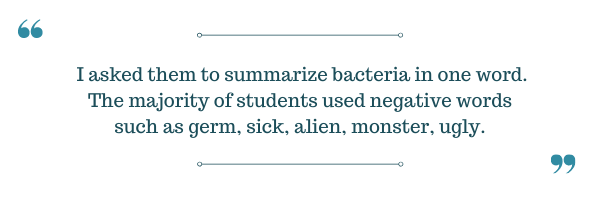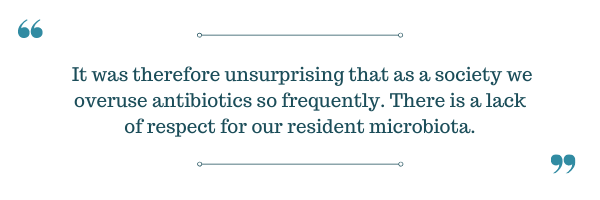Expert Spotlight: 5 Questions with Dr. Carla Brown, Game Doctor
What does antibiotic resistance have to do with mobile games and digital media? At Scotland-based educational studio Game Doctor, combining gaming, mobile apps, and film with public health issues like antibiotic resistance is everyday work. Game Doctor’s work includes mobile game Bacteria Combat, where players battle each other with the ‘good’ and ‘bad’ bacteria cards in their deck. We love hearing about novel approaches to educating the public about the dangers of superbugs and how they can be a part of the solution. That’s why we were excited to talk with Dr. Carla Brown, founder of Game Doctor, to find out how her team works to educate the public on the antibiotic resistance crisis and other health topics and how gamification of public health learning ensures the games they produce are both educational and genuinely fun.
You can learn more about their projects on their website and check out Bacteria Combat on Apple and Google Play, where it’s available for free! You can also view their short film Antibiotic Apocalypse on YouTube.
1. What is Game Doctor? What inspired you to approach science education through gaming strategies and interactive technologies?
Game Doctor is an educational studio based in Scotland developing mobile games for science and health learning. Our games are powered by backend analytics, meaning they are excellent tools for data collection. We work with universities, healthcare organizations and agencies to develop unique products and interventions to educate and change behaviors in healthcare. We are mostly targeted at young people and millennials due to their high uptake of games and digital media.
I set up Game Doctor in 2016 after developing educational games during my PhD and in several museum/academic roles. Games are excellent tools for engagement and education – the digital game-based learning research field is growing every year and there is lots of evidence to support use of games for health education.
Personal to me, I believe games are highly accessible and allow us to work with lots of different types of people. Games also allow you to visualize and interact with very complex and ‘invisible’ concepts, and allow you to tell emotive stories through characters and environments.
2. Can you tell us about “Bacteria Combat” and your inspiration behind the game? Why does the subject of antibiotic resistance work as a digital game?
Bacteria Combat was the very first game I ever designed – it has a special place in my heart. I designed this game while completing a PhD at Glasgow University, studying development of new antimicrobials from gut bacteria. I had run a couple of workshops on antibiotics every year during my PhD (one being a Bacteria/Antibiotics Sports Day) but became quite dissatisfied by the limited number of young people I was reaching. This inspired me to explore developing an educational product that could be disseminated widely.
Bacteria Combat is a card battle game made up of ‘good’ cards (i.e. Lactobacillus, Bifidobacteria); ‘bad’ cards (E.coli, Salmonella, Klebsiella) and joker cards (antibiotics, immune cells). Players battle opponents using different stats on the cards (resistance, speed, special power) and the highest stat wins the round. It’s inspired by the British card game Top Trumps.
The innate competitiveness of antibiotic resistance (antibiotics vs bacteria) paved the way for game development. Developing a game on this subject also allowed me to personify invisible microorganisms and antibiotics, allowing players to connect to this topic.
3. What is the process for creating a science and health education game?
Educational games or ‘serious games’ is a growing industry and different studios and groups have different methods for development. At Game Doctor we use a 5-stage methodology:
- Discovery and Exploration: At this stage we work with the client or target audience to understand pain points and knowledge gaps for the subject-matter. This helps us create clear goals and outcomes for the game, as well as platform. For some projects, this involves conducting research with users via surveys or focus groups.
- Design and Learning Objectives: We start with developing learning outcomes and key messages and design the game story from these. The design phase typically lasts between 1-2 months as we play with different ideas and concepts.
- Prototyping and Testing: This is my favourite stage as we start building the game. We do this in small chunks and build prototypes quickly which we test with users and project stakeholders. We typically use TestFlight or WebGL for this, allowing us to test with lots of users remotely. The end outcome of this phase is the game product.
- Dissemination: We typically release games on Apple and Google Play stores, with marketing supported by clients and stakeholders. This is often supplemented with promotional videos and content and learning materials, depending on the project.
- Evaluation: We then evaluate the effectiveness of the game using focus groups and analytics. This data typically informs future work and developments.
There’s lots of mini-stages and steps in between, mostly involving midnight scribbles on paper, crazy meetings and weird and wonderful queries from testers and clients.
4. In addition to interactive technologies, you’ve also used film and dance to tackle the issue of antibiotic resistance with your short film “Antibiotic Apocalypse.” One interesting thing you’ve noted in discussing this work is that tackling public perceptions and negative connotations of bacteria was a major motivation. What are the misconceptions of bacteria you address and how do they contribute to the issue of antibacterial resistance?
When developing Bacteria Combat, I carried out research with over 300 students in Scotland and England. I asked them to summarize bacteria in one word. The majority of students used negative words such as germ, sick, alien, monster, ugly. Further reading around this, and discussions with microbiology outreach experts Professor Mark Martin, Uni of Puget Sound and Dr. Anne Estes Hearn, University of Maryland, made me realise how widespread this attitude was. It was therefore unsurprising that as a society we overuse antibiotics so frequently. There is a lack of respect for our resident microbiota.
Through Antibiotic Apocalypse, we aimed to educate and engage viewers on how gloriously unique and special bacteria are and highlight how ongoing interaction with antibiotics has led to increase in AMR. To showcase these dynamic interactions and relationships, we chose the medium of dance and martial arts.
This film was co-produced with Edinburgh filmmaker and friend, Siam Colvine. It has been screened across the world and was the Biology Winner in Dance Your PhD 2017.
5. We see that you’re currently working on a mobile game for COVID-19. Can you tell us about this project and how you balance education of your audience with the potential anxieties they might be facing around such public health crises?
In June our team was awarded 50k from Innovate UK (government funding agency) to develop a casual mobile game to educate young people on COVID-19 and reduce anxiety during the pandemic. The project is being conducted in collaboration with health psychologist from University of Stirling and COVID-19 researchers at University of Glasgow and Queens University Belfast. Through working with these experts, we are ensuring the game is accurate, safe and educational.
This project is still in development so I can’t give too much away, but the core mechanic of the game involves players developing unique strategies against COVID-19 involving the immune system and drugs. Through the game, the player also researches and develops a vaccine against the virus. the gameplay is very simple and accessible; however, we are developing a unique story to make the game relatable to young people.
We are running a soft launch of the game to schools in the UK in September. After this we will conduct a widespread launch in collaboration with our partners. We are aiming to have the game trailer released by the end of August.





